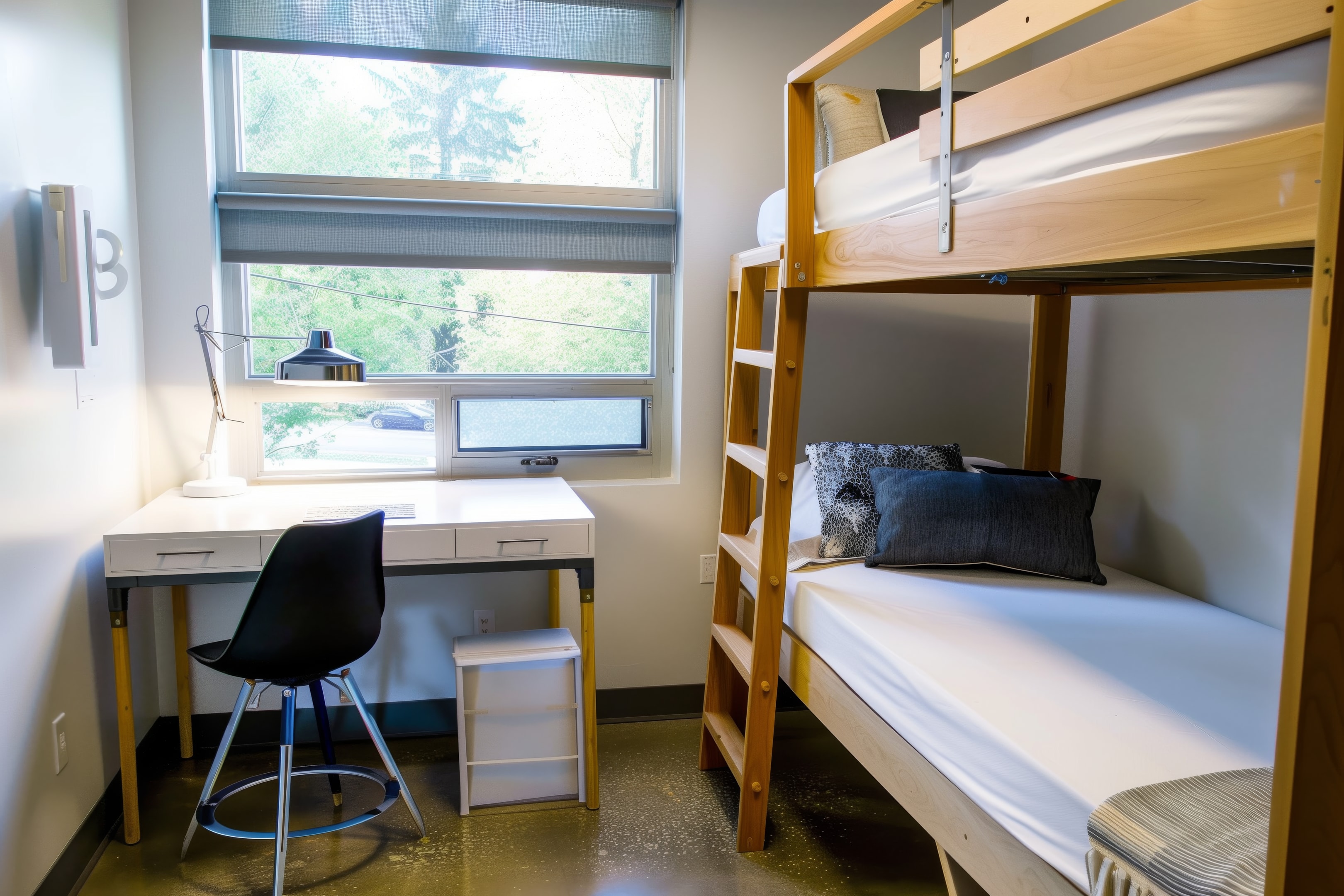.jpg)
Types of Home Insurance in the UK: What You Need to Know
Home insurance provides financial protection for your property and personal belongings when events like fire, theft, or accidental damage occur. The level of insurance cover you need depends on your property type, what you want to protect, and the risks you're exposed to.
Many households underestimate those risks. For example, it’s estimated that around a quarter of UK homes (7 million) are currently without home insurance, meaning nearly half go without financial protection for their belongings.
This guide explains what each type of home insurance covers, how to arrange buildings insurance based on rebuild cost, and which optional extras can improve your protection.
Why home insurance matters
Your home is probably the most significant investment you’ll ever make. Ensuring you have adequate home insurance cover is essential for safeguarding your property, possessions, and financial security against unforeseen events such as fire, theft, floods, or accidental damage.
Understanding the various types of home insurance helps you choose the right home insurance policy for your specific circumstances.
While home insurance is not a legal requirement in the UK, mortgage lenders typically require buildings cover before completion. This makes it a practical necessity for most buyers.
What are the main types of home insurance?
Most policies fall into three core categories, each designed to protect different aspects of your home and belongings.
Buildings insurance

Buildings insurance pays to repair or rebuild the structure of your home if it's damaged by events like fire, flood, or subsidence. It typically includes permanent fixtures, such as kitchens and bathrooms, and may also extend to outbuildings, including garages or sheds. Most British insurers require homeowners to arrange buildings insurance as a condition of their mortgage.
Typically covers:
- Damage to walls, roof, floors, and ceilings
- Kitchen units, bathroom suites, and other permanent fixtures
- Outbuildings such as garages and greenhouses
- Fire, flood, storm, and subsidence damage
- Escape of water and vandalism
If you own a listed building or a home with non-standard construction, you may need specialist buildings insurance to reflect the full rebuild cost and meet conservation requirements.
Contents insurance

Contents insurance covers personal belongings inside your home. It helps pay to replace or repair them if they are stolen, damaged, or destroyed by events like fire, flood, or burglary. It applies to items kept inside your home, and in some cases, those temporarily taken outside.
Typically covers:
- Furniture, electronics, and appliances
- Jewellery, watches, and valuables
- Mobile phones, laptops, and personal tech
- Clothing, books, and soft furnishings
- Theft, fire, flood, and accidental damage (if selected)
If you own valuable jewellery, artwork, or premium electronics, standard contents insurance may fall short. Specialist policies like rivr’s offer higher single-item limits and can include worldwide protection for your belongings.
Combined buildings and contents insurance

A combined policy includes both buildings and contents cover in one plan. It protects the structure of your home (such as walls, roof, kitchen, and bathroom) along with personal items like furniture, electronics, and clothing.
This setup makes it easier to manage your policy and submit a single claim if an incident affects both the building and your belongings. Your insurance company may offer a discount for combining policies, which can lower your overall home insurance cost.
Specialist types of home insurance
Specialist home insurance provides tailored cover for situations that fall outside standard policies, including rental properties, unoccupied homes, or high-value houses
Landlord insurance
If you rent out a property, landlord insurance is essential. It covers the building and any fixtures or furnishings you provide, such as appliances, flooring, or furniture. According to NimbleFins, basic landlord buildings insurance in the UK costs around £170 to £226 per year, based on a typical £200,000 rebuild cost.
Unlike standard home insurance, landlord policies include cover for risks such as rent loss after fire or flood, damage caused by tenants, legal expenses, and public liability if someone is injured on the property.
This helps protect you from becoming legally liable for accidents involving tenants or visitors. Add-ons like rent guarantee or legal expenses cover can provide further protection. Public liability cover is usually included as standard.
Tenants insurance (Renters contents insurance)
Renters often wonder, “What insurance do I need when the landlord already has insurance?” The answer lies in understanding the landlord’s responsibility. Their policy usually covers the building itself and any fixtures or furnishings they provide.
A dedicated tenants’ contents policy is crucial. It protects your possessions, including electronics, jewellery, clothing, and furniture, against theft, loss, or accidental damage. Some policies may also cover items provided by the landlord, such as carpets or curtains.
It is important to estimate the full value of your belongings to avoid being underinsured. Most tenant policies also include liability protection if you accidentally cause damage to the landlord’s property, helping you stay protected in more ways than one.
Student insurance

Students typically live in shared accommodation, which presents unique risks. Student insurance ensures personal possessions, such as laptops, mobile phones, bicycles, and study materials, are protected against theft, loss, or accidental damage.
Unlike most home insurance policies, student cover is specifically tailored, offering affordable premiums and robust protection even outside your accommodation.
When choosing your policy, ensure the insured amount reflects the full value of your possessions to guarantee sufficient protection during your university years.
Non-standard home insurance

Homes that deviate from traditional construction methods, such as thatched roofs, listed buildings, or timber-framed homes, often face challenges in obtaining adequate coverage from standard insurers.
Most home insurance policies are designed for standard construction homes and may not provide adequate protection against these unique risks.
Non-standard home insurance provides highly tailored cover, accurately reflecting the full value of rebuilding your unique property.
This ensures comprehensive protection, especially if you own your property outright, safeguarding your valuable asset from unforeseen circumstances such as fires or structural damage.
Unoccupied property insurance

Most home insurance policies exclude properties left empty for more than 30 days due to higher risks of vandalism, break-ins, or undetected damage. Unoccupied property insurance provides targeted protection for homes that are left vacant for an extended period, such as during renovation, probate, or a pending sale.
Unoccupied property policies often limit cover unless you meet certain conditions, such as regular inspections or draining plumbing systems. Some insurance companies may require additional security measures or specific endorsements, which can affect your overall insurance cost.
Second home insurance
Second home insurance is designed for properties used occasionally, like a holiday home, weekend retreat, or inherited house. It provides buildings and contents cover between visits, assuming the property is maintained and used periodically.
The key distinction is that second homes are still occupied at times, while unoccupied homes remain empty for extended periods. You can often add extra cover for accidental damage or public liability, especially if the home is let short-term. Always check the terms, as insurance companies may apply different conditions to second homes than to your main residence.
High-value home insurance
.jpg)
High-value home insurance is built for properties with rebuild costs typically over £1 million, or homes that contain valuable contents such as fine art, jewellery, or antiques.
Most standard policies apply strict limits to valuables and may not reflect the full value of your home or its contents. A high-value policy offers broader, tailored protection that matches the true worth of your property and belongings.
Optional extras and add-ons
To enhance your home insurance coverage, consider these popular add-ons:
Accidental damage: Covers unforeseen incidents such as spilling liquids on carpets or breaking windows, helping you avoid unexpected repair costs.
Home emergency cover: Provides urgent assistance for plumbing, heating, or electrical failures, ensuring quick repairs when you need them most.
Legal costs cover: Offers financial protection if you're involved in legal disputes, such as disagreements with neighbours or contractors.
Personal possessions cover: Protects valuables like jewellery, electronics, and mobile phones even when they're away from home. Understanding the specific items covered can help you choose the right level of protection.
Garden and bicycle cover: Specifically covers outdoor furniture, gardening tools, and bicycles against theft or damage.
Alternative accommodation cover: Pays for temporary housing if your home becomes uninhabitable due to incidents like fire or flooding.
Most insurers also offer discounts if your home has safety features like an approved burglar alarm installed.
How to choose the right type of home insurance
To find the right home insurance policy:
- Identify your property type and any special construction features.
- Accurately calculate your home’s rebuild cost.
- Clearly estimate the replacement value of personal possessions.
- Choose optional extras based on your lifestyle and specific needs.
- Compare quotes from multiple insurance companies to find the best deal and level of coverage.
- Carefully read what your policy covers to avoid unexpected exclusions or gaps.
If you have specific needs (such as owning a leasehold flat or a high-value home) seeking advice from specialist brokers, like rivr, ensures comprehensive protection.
Conclusion
Having the correct home insurance cover means you’re protected against life's unpredictable events. Regularly reviewing your policy, particularly after home improvements or major purchases, ensures your insurance continues to offer complete protection.
With the right insurer and carefully selected cover, you’ll have peace of mind knowing your home and possessions are secure, now and for the future.
For more guidance on home insurance, visit the Association of British Insurers (ABI).
rivr: cover for those with more to protect

rivr is a high-value home insurance provider that builds policies around you. Designed specifically for unique and valuable properties, our tailored policies offer enhanced cover for premium buildings and contents, high-value artwork, jewellery, and more. With rivr, you’ll benefit from personalised service, greater flexibility, and peace of mind that your home is truly protected.
Read more
Frequently asked questions
Yes. With rivr, your insured contents are covered anywhere in the world. This includes jewellery, watches and personal possessions when you’re travelling, as long as they’re insured under your contents cover.
Yes. Non-standard homes like thatched or timber-framed cottages usually need tailored underwriting because of higher fire or rebuild risks. Unfortunately, rivr cannot currently insure thatched properties.
The rebuild cost is what it would cost to rebuild your home from the ground up, excluding land value. It’s usually lower than the property’s market value.
While home insurance is not legally required in the UK, buildings insurance is usually compulsory if you're buying with a mortgage. Lenders require it to be in place from the date of exchange to protect the property against structural damage.
Combined buildings and contents insurance is the most popular type of home insurance in the UK. According to the FCA’s 2023 data, it accounts for the majority of home insurance premiums, with 45 pence in every £1 paid out in claims under this policy type. Industry research estimates that combined policies make up around 70% of the UK market.
The right type of house insurance depends on your circumstances.
- Homeowners usually need buildings insurance (often required by mortgage lenders) and contents insurance to protect belongings.
- Renters only need contents insurance.
- Landlords need specialist landlord insurance.
- High-value or non-standard homes may require tailored cover from specialist providers.





